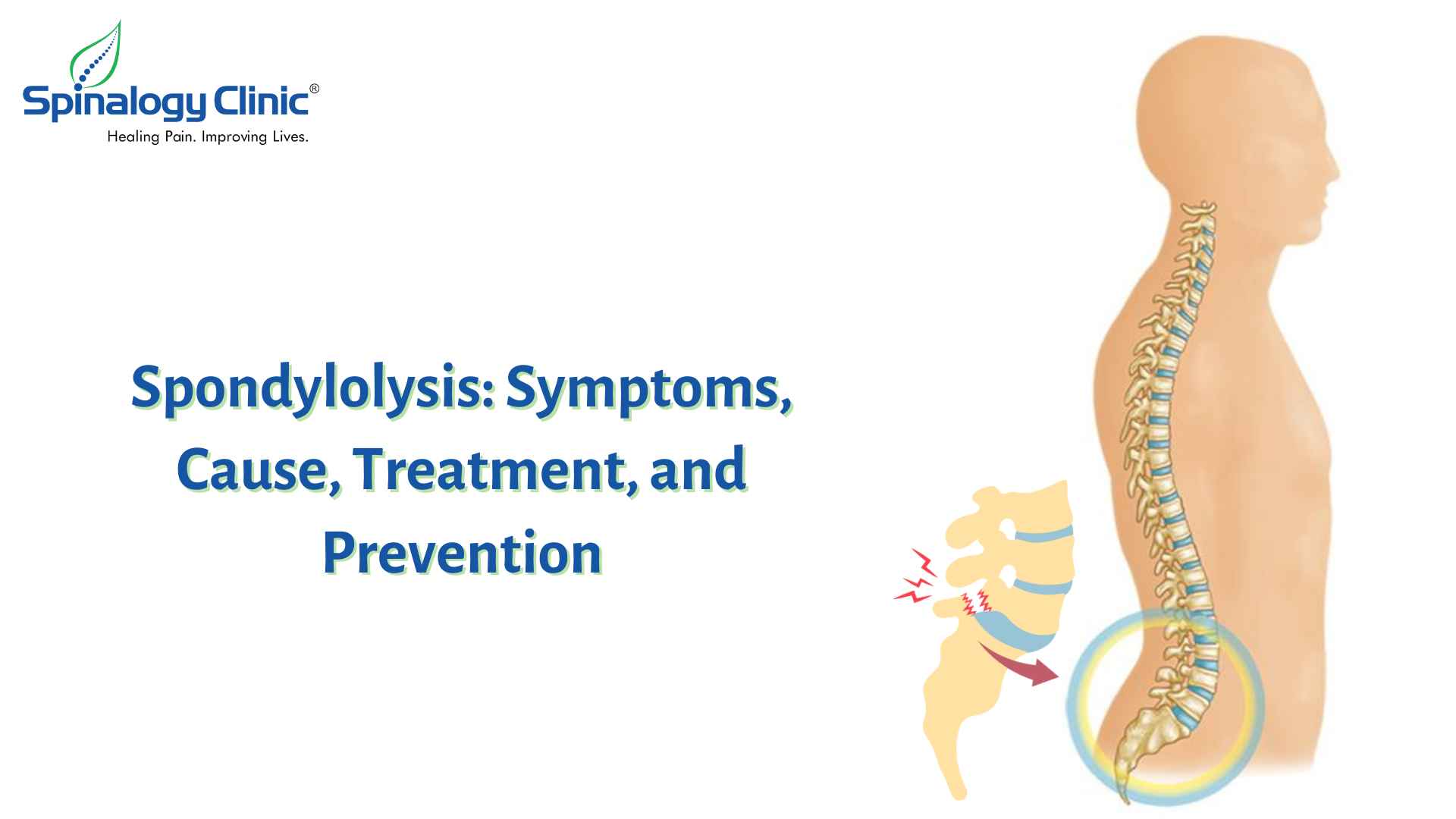Spondylolysis: Symptoms, Cause, Treatment, and Prevention
Spondylolysis is a unilateral or bilateral defect in pars interarticularis of vertebrae. It may or may not be accompanied by vertebral body slippage. Back pain usually occurs as a result of spondylolysis. The majority of people do not require surgery to treat it. It is best to start resting, taking medication, and doing physical therapy right away if you or your child suffers from back pain.
What is spondylolysis?
There are 33 vertebrae in your spinal column. In healthcare, spondylolysis is sometimes called pars interarticularis or pars fractures because it affects the tiny ridges of bone between vertebrae.
Spondylolysis commonly affects the lower back (lumbar spine), but can also affect the neck (cervical spine) and middle back (thoracic spine).
What are the symptoms of spondylolysis?
It is most common for people with spondylolysis to suffer from back pain. Pain usually occurs as follows -
- The pain spreads into your thighs and buttocks after starting in your lower back.
- You feel a muscle strain in or around your lower back.
- When you are active, it gets worse, and once you stop, it gets better.
Spondylolysis can affect some people without causing symptoms. People may find out they have it only after having an imaging test for another reason.
How does spondylolysis occur?
Spondylolysis is caused by damage to your vertebrae's pars interarticularis.
A pars interarticularis is a structure that links vertebrae above and below one another to form a working unit. You can move and bend your spine through these links. Your pars interarticularis can be cracked by anything that damages them. Healthcare providers refer to these cracks as pars fractures.
Pars fractures are most commonly caused by -
- Wear and tear on your vertebrae is caused by repetitive movements that stress your lower back. Pars fractures are caused by cumulative damage over time. Vertebrae can be damaged by physical work, contact sports, and repeated injuries to the low back.
- Growth spurts: Spondylolysis is more likely to occur in children and teens experiencing growth spurts
- Genetics: There are some people who are born with thinner vertebrae.
- Factors that increase the risk of spondylolysis
Spondylolysis can affect anyone. A pars fracture is more likely to occur in certain groups of people, such as:
- Contact athletes, such as football players, gymnasts, and weightlifters.
- Teenagers and children's bodies are still undergoing rapid development.
Spondylolysis complications
Spondylolysis that is left untreated can cause spondylolisthesis. An abnormal slippage of the vertebrae over another is called a spondylolisthesis. Sciatica can be caused by spondylolisthesis.
How can spondylolysis be diagnosed?
Spondylolysis can be diagnosed through a physical examination and imaging tests.
The doctor should be informed of your symptoms and medical history. Whenever you experience back pain, tell your healthcare provider what you were doing right before it happened.
What tests are used to diagnose spondylolysis?
In imaging tests, your provider takes images of your spinal vertebrae and surrounding tissues, including:
- An X-ray.
- The magnetic resonance imaging (MRI) technique.
- CT scans.
What is the treatment for spondylolysis?
To heal the pars fracture, your provider will treat your pain and other symptoms. Treatment may last from a few weeks to a few months, depending on how severe the cracks are.
Treatments for spondylolysis include:
1. Physical Activities
You can reduce the stress on your spine by taking a break from sports or other intense physical activities.
2. Medications
NSAIDs are available over-the-counter and can help reduce pain and inflammation. You shouldn't take over-the-counter pain relievers for longer than 10 days without talking to your doctor first.
3. Corticosteroids
Inflammation is reduced by corticosteroids.
You might be prescribed an oral medication that you'll take by mouth.
4. Physical therapy
Physical therapists help you improve your body's ability to move. Pain, stiffness, and discomfort, which make it difficult to move, will be managed by them. The muscles around your spine will be strengthened with exercises given by a physical therapist.
5. Bracing
To stabilize your spine during the healing of the pars fracture, your physician might recommend wearing a back brace.
Is surgery necessary for spondylolysis?
It is most often nonsurgical treatments that make people feel better.
Ask your provider when you can resume sports or exercises if you've been playing for a while.
What can be done to prevent spondylolysis?
Here are some general safety tips to help you prevent a pars fracture:
- The upper half of your body should always be secured by a seatbelt, including the shoulder harness.
- You should always wear proper protective equipment when participating in sports or activities.
- You should always use the right tools or equipment at home in order to reach things.
- A bone density test may be recommended if you're older than 50 or if your family has a history of osteoporosis.
- You should use a cane or walker if you have difficulty walking or are at a higher risk of falling.
How will I be affected by spondylolysis?
Symptoms of spondylolysis can be improved with nonsurgical treatments such as rest, medication, and physical therapy. You cannot undo the fracture with these treatments, but you can return to your daily activities pain-free as soon as possible.
How soon can I resume physical activity and sports?
You should consult your healthcare provider before returning to intense exercise. You need to give your vertebrae time to heal, even if your pain has improved.
Before returning to intense physical activities like sports and exercise, people recovering from spondylolysis usually need several weeks (or even months) of treatment.
What is the best time to see my healthcare provider?
If you experience severe low back pain for more than a few days or if it makes it hard or impossible for you to perform your usual activities, see a healthcare provider right away.

_1747226427_1751827070.png)
_1744793045_1751827442.png)
_1743751136_1751830603.png)
